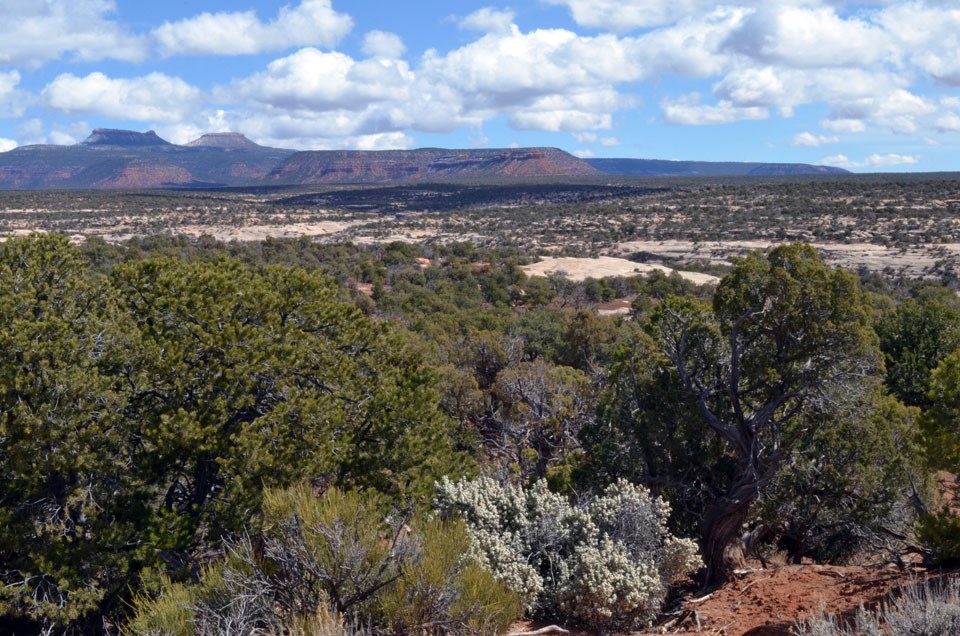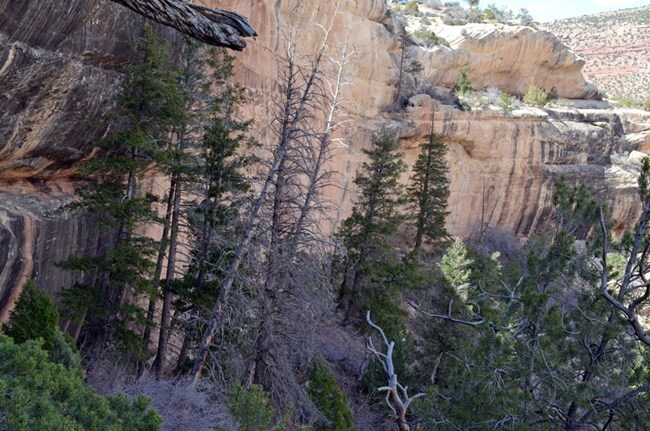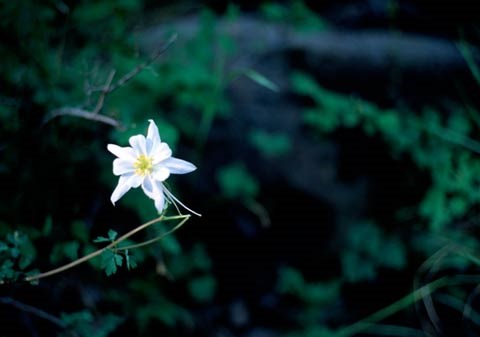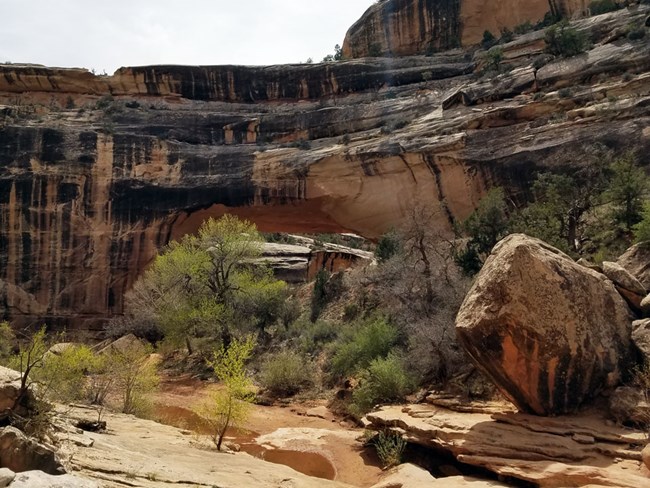
NPS Photo by Austin Tumas From mesa tops to ancient streambeds, Natural Bridges supports hundreds of different kinds of plants. Shrubs and trees are the most visible plant life at Natural Bridges, but take a closer look and you will notice jewel-toned blooms and spiky succulents. Take a tour of the native plant walk near the visitor center, study a juniper at your campsite, and hike among cottonwoods on the canyon floor. Select a Park:Select a Species Category (optional):
Search results will be displayed here.
On the Mesa TopMixed stands of pinyon pine and Utah juniper cover millions of acres in the southwest. These trees grow closely associated and dominate the landscape in dry, rocky terrain at elevations between 4,500 and 6,500 feet. In Natural Bridges, pinyon-juniper woodlands thrive on the mesa top. As elevation decreases, trees become more scattered. Pinyon pines have crooked trunks, reddish bark, and are very slow growing. Trees 4 to 6 inches in diameter and 10 feet tall may be 80 to 100 years old. Their root systems are extensive and are often the same size as the above ground tree. Pinyons produce compact cones that contain tasty, protein-rich seeds called pine nuts. Pine nuts were a major source of food for Native Americans and are still popular today. Animals like the bushy-tailed woodrat, the pinyon mouse and the pinyon jay also prize them. The Utah juniper is the classic desert tree. Its twisting branches give the tree strength against desert winds. When water is scarce, a juniper will actually stop the flow of fluids to a major branch so that the tree has a better chance for survival. Scale-covered leaves and bluish, waxy-coated seeds help the tree conserve moisture. Rocky Mountain junipers grow at higher, but overlapping, elevations with the Utah juniper, and are less common in Natural Bridges. The mesa top is also home to several varieties of wildflowers, shrubs, cacti, and yucca. 
NPS Photo // From left to right: Pinyon Pine, Utah Juniper, and Rocky Mountain Juniper On Canyon SlopesSeveral plants also grow along the canyon slopes, taking advantage of crevices, seeps, and shade. Many of the same wildflowers that grow on the mesa top can survive down here. Shrubs like service berry, mountain mahogany, and round leaf buffalo berry also grow here. You may even spot a lone ponderosa pine. More unusual are the small microhabitats that have formed here. 
NPS Photo by Austin Tumas Douglas FirsThe careful observer may spot Douglas Firs perched on shady, north-facing slopes. These trees are high elevation and cold-loving remnants from Natural Bridges’ colder and wetter past. Surrounding them are communities of smaller, dependent plants. Together, they are tiny montane habitats that have survived for thousands of years. 
NPS Photo Hanging GardensFurther down the canyon walls, hanging gardens cling to crevices and alcoves. Hanging gardens are communities of water-loving plants that thrive in places where conditions are cooler and wetter than in the surrounding desert. These communities are made up of several species, including mosses, maidenhair ferns, cave primrose, alcove columbines, red monkeyflowers, and rare death camas. Where does the water come from? On top, precipitation soaks into the sandstone, where it slowly trickles further into the rock. The water eventually hits a different, very solid rock layer. At that point, the water travels horizontally until it seeps through the canyon wall. At Natural Bridges, many of these seeps support hanging gardens. 
NPS Photo by Austin Tumas On the Canyon FloorMuch of Natural Bridges’ water is on the canyon floor. These ancient streambeds usually appear dry except for a few persistent pools, but shallow groundwater and occasional flash floods provide enough for riparian plants. Cottonwood, willow, and box elder trees are common here, as well as water-loving grasses, wildflowers, and even cattails. A little up-slope from these water-loving plants, you’ll find similar shrubs and wildflowers as on top. Native Plant WalkCheck out many of our native plants along a short, flat trail next to the visitor center. The best time to take this trail is in late spring, when many of the plants are in bloom. This is the perfect spot to see brilliant cactus blooms, learn common plant names, and carefully compare pinyon pines to junipers! Learn More |
Last updated: April 29, 2025
